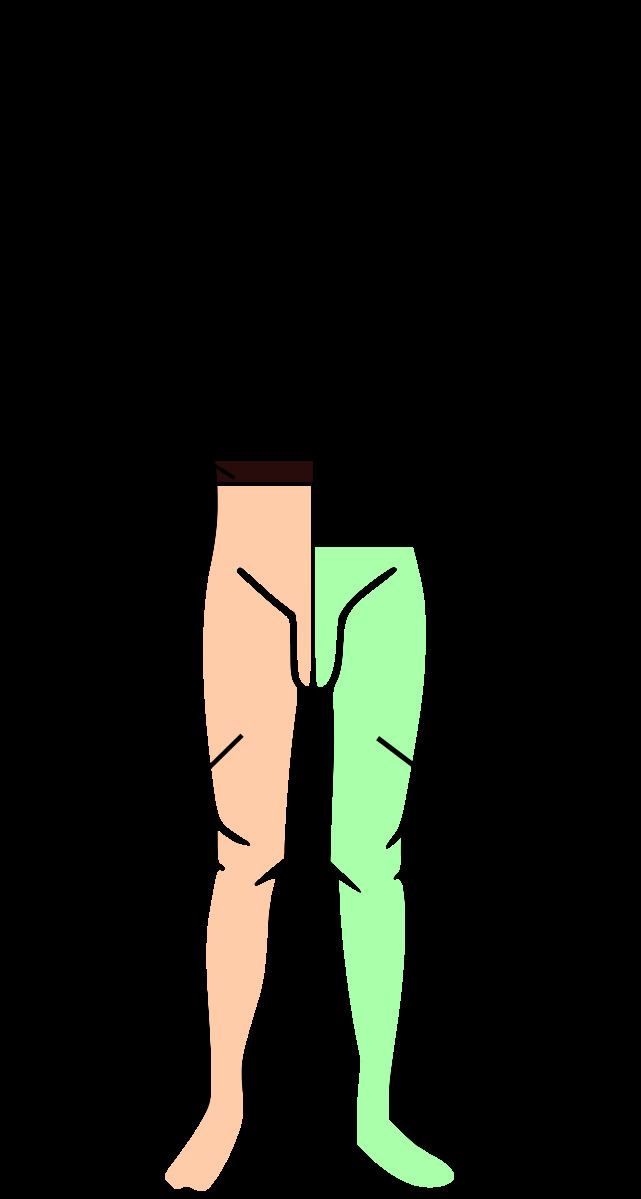Specialty neurology ICD-9-CM 344.89 eMedicine emerg/70 pmr/17 | ICD-10 G83.8 DiseasesDB 31117 MeSH D018437 | |
 | ||
Brown-Séquard syndrome (also known as Brown-Séquard's hemiplegia, Brown-Séquard's paralysis, hemiparaplegic syndrome, hemiplegia et hemiparaplegia spinalis, or spinal hemiparaplegia) is caused by damage to one half of the spinal cord, resulting in paralysis and loss of proprioception on the same (or ipsilateral) side as the injury or lesion, and loss of pain and temperature sensation on the opposite (or contralateral) side as the lesion. It is named after physiologist Charles-Édouard Brown-Séquard, who first described the condition in 1850.
Contents
Classification
Any presentation of spinal injury that is an incomplete lesion (hemisection) can be called a partial Brown-Séquard or incomplete Brown-Séquard syndrome.
Brown-Séquard syndrome is characterized by loss of motor function (i.e. hemiparaplegia), loss of vibration sense and fine touch, loss of proprioception (position sense), loss of two-point discrimination, and signs of weakness on the ipsilateral (same side) of the spinal injury. This is a result of a lesion affecting the dorsal column-medial lemniscus tract, which carries fine (or light) touch fibers, conscious proprioception, vibration, pressure and 2-point discrimination, and the corticospinal tract, which carries motor fibers. On the contralateral (opposite side) of the lesion, there will be a loss of pain and temperature sensation and crude touch 1 or 2 segments below the level of the lesion via the Spinothalamic Tract of the Anterolateral System. Bilateral (both sides) ataxia may also occur if the ventral spinocerebellar tract and dorsal spinocerebellar tract are affected.
Fine (light) touch vs. crude (deep) touch
Crude touch, pain and temperature fibers are carried in the spinothalamic tract. These fibers decussate at the level of the spinal cord. Therefore, a hemi-section lesion to the spinal cord will demonstrate loss of these modalities on the contralateral side of the lesion, while preserving them on the ipsilateral side. Upon touching this side, the patient will not be able to localize where they were touched, only that they were touched. This is because fine touch fibers are carried in the dorsal column-medial lemniscus pathway. The fibers in this pathway decussate at the level of the medulla. Therefore, a hemi-section lesion of the spinal cord will demonstrate loss of both fine touch (preserved on the contralateral side) and crude touch (destruction of the decussated spinothalamic fibers from the contralateral side) on the ipsilateral side.
Pure Brown-Séquard syndrome is associated with the following:
Diagnosis
Magnetic resonance imaging (MRI) is the imaging of choice in spinal cord lesions.
Brown-Séquard syndrome is an incomplete spinal cord lesion characterized by findings on clinical examination which reflect hemisection of the spinal cord (cutting the spinal cord in half on one or the other side). It is diagnosed by finding motor (muscle) paralysis on the same (ipsilateral) side as the lesion and deficits in pain and temperature sensation on the opposite (contralateral) side. This is called ipsilateral hemiplegia and contralateral pain and temperature sensation deficits. The loss of sensation on the opposite side of the lesion is because the nerve fibers of the spinothalamic tract (which carry information about pain and temperature) crossover once they meet the spinal cord from the peripheries.
Causes
Brown-Séquard syndrome may be caused by a spinal cord tumour, trauma [such as a gunshot wound or puncture wound to the cervical (neck) or thoracic spine (back)], ischemia (obstruction of a blood vessel), or infectious or inflammatory diseases such as tuberculosis, or multiple sclerosis. In its pure form, it is rarely seen. The most common cause is penetrating trauma such as a gunshot wound or stab wound to the spinal cord. Decompression sickness may also be a cause of Brown-Séquard syndrome.
The presentation can be progressive and incomplete. It can advance from a typical Brown-Séquard syndrome to complete paralysis. It is not always permanent and progression or resolution depends on the severity of the original spinal cord injury and the underlying pathology that caused it in the first place.
Pathophysiology
The hemisection of the cord results in a lesion of each of the three main neural systems:
As a result of the injury to these three main brain pathways the patient will present with three lesions:
Treatment
Treatment is directed at the pathology causing the paralysis. If it is because of trauma such as a gunshot or knife wound, there may be other life-threatening conditions such as bleeding or major organ damage which should be dealt with on an emergent basis. If the syndrome is caused by a spinal fracture, this should be identified and treated appropriately. Although steroids may be used to decrease cord swelling and inflammation, the usual therapy for spinal cord injury is expectant.
Epidemiology
Brown-Séquard syndrome is rare as the trauma would have to be something that damaged the nerve fibres on just one half of the spinal cord. The classic cause is a stab wound in the back.
History
Charles-Édouard Brown-Séquard studied the anatomy and physiology of the spinal cord. He described this injury after observing spinal cord trauma which happened to farmers while cutting sugar cane in Mauritius. French physician, Paul Loye, attempted to confirm Brown-Séquard's observations on the nervous system by experimentation with decapitation of dogs and other animals and recording the extent of each animal's movement after decapitation.
